Traveling Cabinets of Wonder
Lola
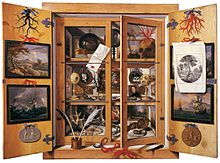
For this class' project I will be building a traveling server. Why would I make a server travel physically when the idea is that it can stay in one place and have its "soul" travers the planet via the Internet? One might ask...
Because I find it an interesting proposal to have the server travel, because this is a way for me to explore the possibility of making the Internet a material experience.
This server will be sent around the globe (or as far as I can make it go) as part of a cabinet of wonder ie. a Container filled with local curiosities. The server will host all the intangible curiosities.
Getting started
For the past week I have been working on the idea for the project.
The performative process
1. The first person gathers a series of curiosities of their local environment, they could be either from the natural or socio-cultural sorroundings.(leafs, posters, sounds of the streets, photos of the skyline, flowers, feathers...)
2. They mark these curiosities in a way that they decide would be descriptive for someone who has never been where they are. (names, dates, scientific description...)
3. They put the physical objects into the cabinet and upload the multimedia onto the server
4. The server gets sent to the next person, who can respond, respond and interact, just add, or respond, add and interact to the curiosities received and then, sends it to the next person.
The server setup
Bringing the idea down to the reality of how to configure the server has brought up a series of really interesting ideas.
My yunohost server will be in a Raspberry Pi, which I have successfully configured.
If I decide to not make my server public. - Because the idea of a local server might work as a way to force the users to configure the server in their network in order to use it-
1. What happens if the Pi gets lost or damaged?
2. Should I protect the server with password?
3. Should I make the server public so that whenever someone receives it and makes it public it can cast information to the network of participants? Affording them access to the digital but not physical curiosities?
4. Being that I am using a Pi... could I add some sensor to the server? So that when it is on and receives a stimuly it can warn the participants of the network?
I will try to answer these questions and decide on the way the files will be hosted on the server before next class.

Involutionary Momentum
How does the world look from an affective ecology lens?

Image by Suus Agnes Claessen from project Cultivating Affective Ecologies for Unloved Biodiversity Through Visual Narrative
The idea for this project stems greatly from Carla Hustak and Natasha Myers' paper: Involutionary Momentum: Affective Ecologies and the Sciences of Plant/Insect Encounters, with Carla Hustak
What stood out for me form this paper was the intelectual challenge of imagining an alternative way of explaining the changes that organisms have suffered throughout time, wihtout relying on the concept of Darwinian Evolution.
What if plants, insects, animals, birds... changes over time do not respond a mere competition for survival but (also/mostly) an adaptation to their pleasurable experiences?
This question revealed two possible paths to aproach the exploration of unknown natural environments:
1. To stir away from the "explorer's" point of view and collect stories from the humans that are part of the unknown environment.
2. To allow the elments of the environment to speak through their affections, the pleasures that one can derive from their observation or proximity as much as the ones that can be guessed.
Decolonization of the natural narrative
Understanding Nature through the stories of her inhabitants
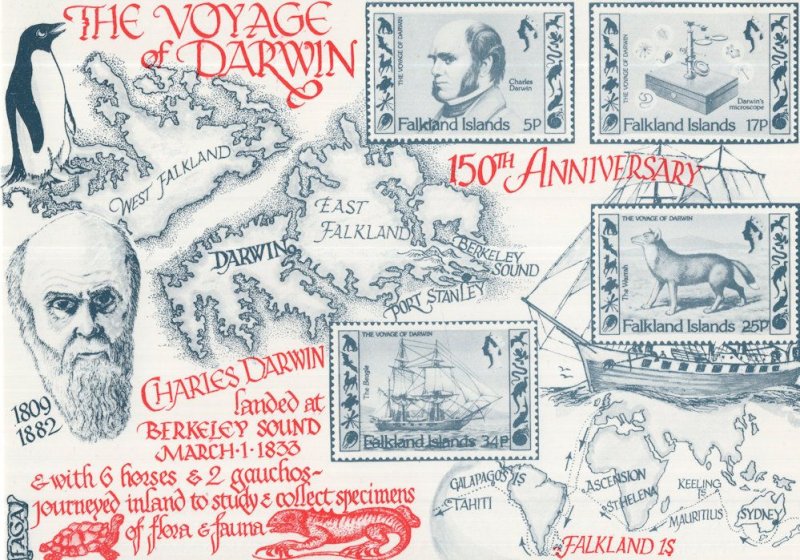
Image of 1980 commemorative postcard of Darwin's voyages.
This concept is one of the two pillars for this project.
Much has been said about the colonialist idea of "The Explorer" and its consequences on the current understanding and manifestation of natural sciences:
The explorer: the male from an industralized society who enacts in the name of his political benefactors the discovery of savage and exotic lands. With the aim of a) furthering the understanding of life, b) engrossing the available resources for the advancement of said society.
A possibly reductive but generalized enough description of what an Explorer is.- use the present tense because SpaceX I'm looking at you-
Amongst the many problematic consequences of consuming the explanation of nature from this "Explorer" the one that I am most interested in is: They try to explain what life is, without ever living THAT particular life.
The birds that sing in the morning, the flowers that bloom when there is no rain, how tall bushes gro when there is.. All this as known to the inhabitants of an ecosystem, not because they are meticulosly observing their environment, but because they live it.
This project aims at providing a medium for them to share this story of this knowledge. It does not aim to propose a new way of doing natural science, but rather an exploration into how to understand what that science had been explaining, providing a different lense of interpretation.
The romance of Nature
Appealing to the Poet inside the Biologist
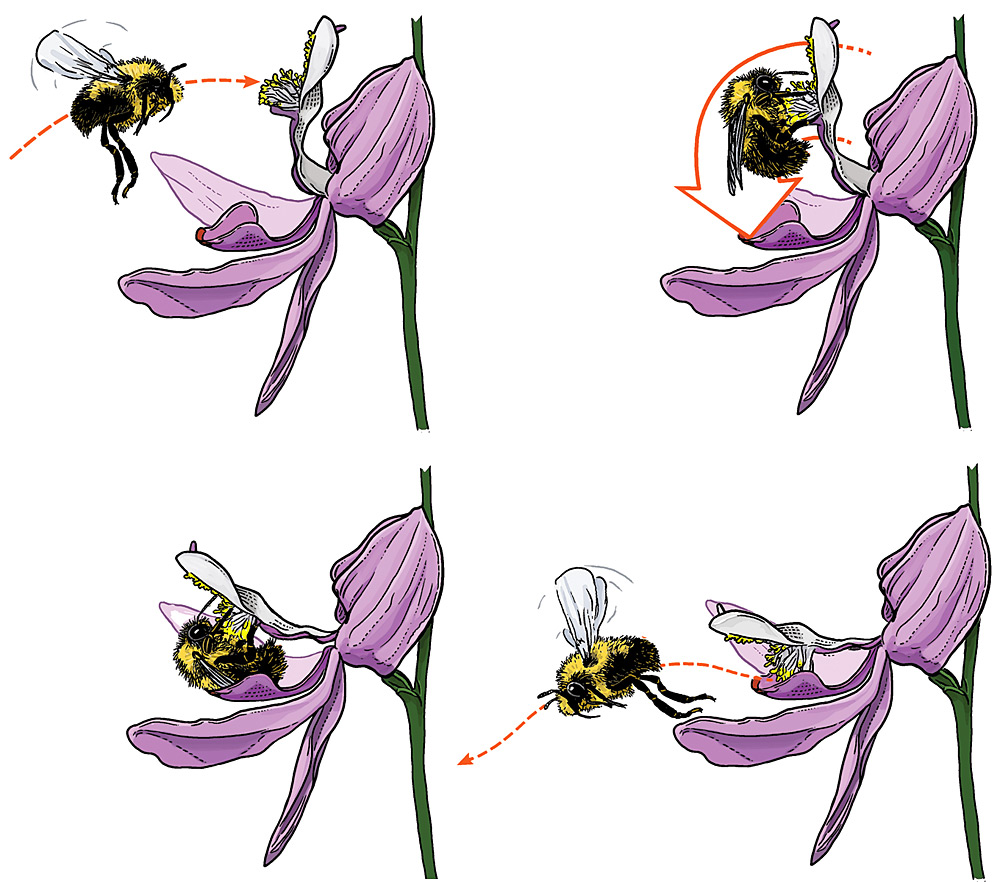
Image: "Calapogon Orchid Pollitation" by Kollath Graphic Design
This Scene from "Adaptation" by Spike Jonze perfectly portraits one of the main arguments on the "Involutionary Momentum" paper: the bees and the flowers do their life dances not out of survival, but out of enjoyment.
And while I fully acknowledge the pernicious concept of the colonial explorer. One cannot overlook Darwin's genial contributions to the understanding of living beings.
Besides his collection of "specimens" and his extensive documentation. Darwin also had a ludic view to nature, which came from being within it througout his life.
This ludic view of nature is what this project seeks to enhance. What are the dances that one can observe in the world around? How is beuty witnessed? Love? Joy?
And how can these dances be shared with someone across the globe in box that contains both specimens and multimedia?
An internet that travels the world
Turning a server into the bottle with a message

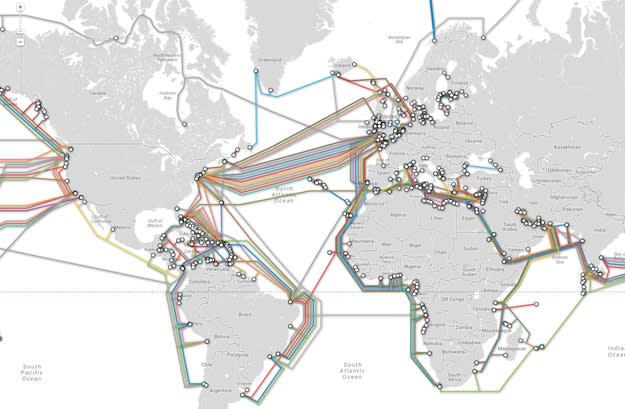
Images: Map of the HMS Beagle Voyage by igemoe.com. TeleGeography’s Submarine Cable Map
Like I explained in the first entry this project is a box into which every participant will be able to save samples of the natural story they are telling and a server onto which they will be able to:
1. Upload the multimedia that complements that natural story.
2. Cast their new story from the place where they receive it.
I want to acknowledge that this bring up a very obvious question: Why not just add a USB to the box, or set up a password to each participant so they can upload material to a website when the tiem is right.
And the answer I am afraid is a little of an artistic craprice: Because I want to materialize the experience of The Internet. The abstraction of a "Cloud" onto which we upload information, even if said cloud is hosted in a server setup by an individual, does not materialize what the server does.
It is important for this project to have this experience be phisycal and explicit.
Going back to the notion of the explorer. Besides the information gathered during the exploration, the explorer had also a direct access to the journals, museums, palaces where the stories they created were told and stablished as truth.
What if the only way of acquiring those learning was only possible if the ones crating the knowledge are able to cast it to the world? What would be the experience of following along a pice of the internet as it gets built from within? How could that transform the way we understand knwoledge ownership and transfer?
Where we are so far
The MVP for the traveling cabinet
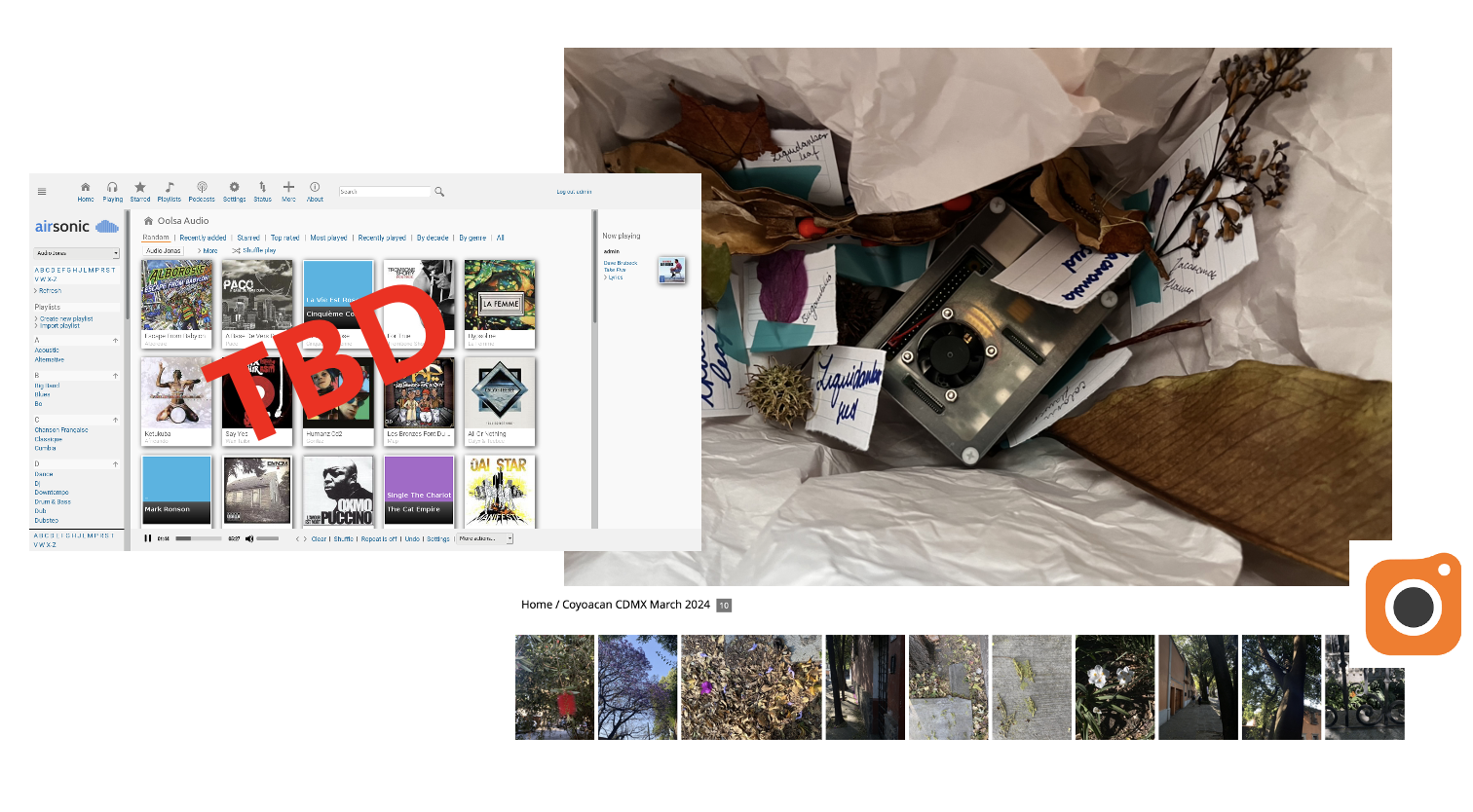
Thus far a Yunohost has been mounted into a Pi, Piwigo instance has been loaded onto it and the collection of local specimens has started.
The laundry list of to-dos is quite long but if it all works this cabinet might do its first trip across the atlantic ocean soon.
Stay tuned at: www.reginacantu.com or this blog
- Figure out how to upload audio
- Figure out how to upload video
- Generate the public image of the server - A website?
- Test the Pi in various routers
- Improve the construction of the cabinet
- Write instructions for collection and documentation
- Create cataloging tags to include in the cabinet
- User test the cabinet and server instruccions